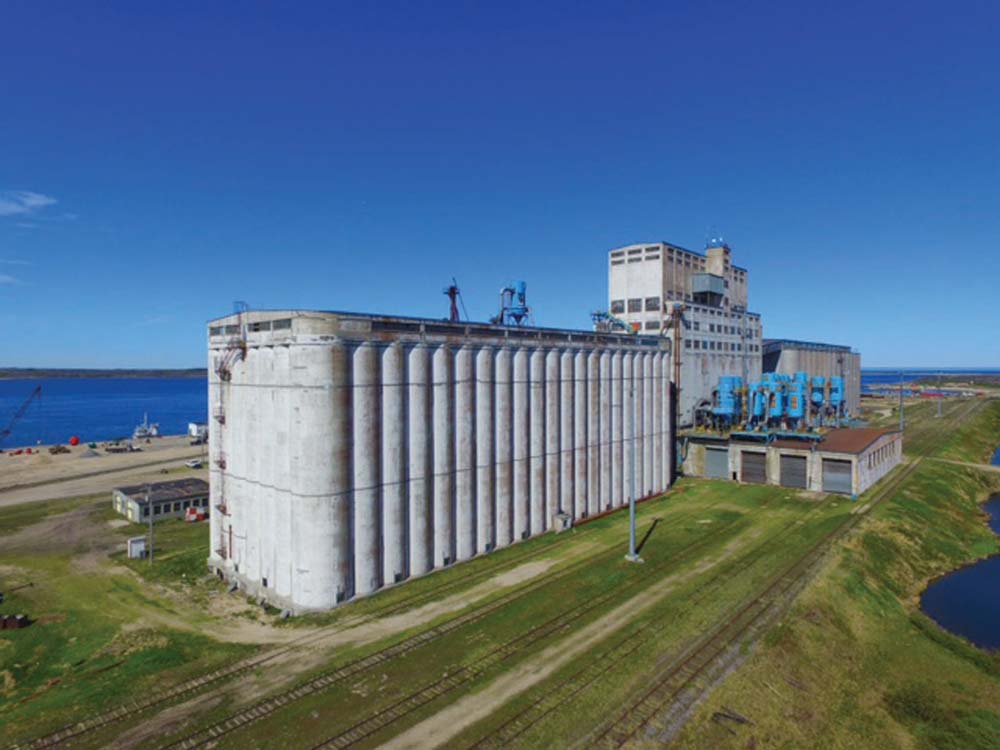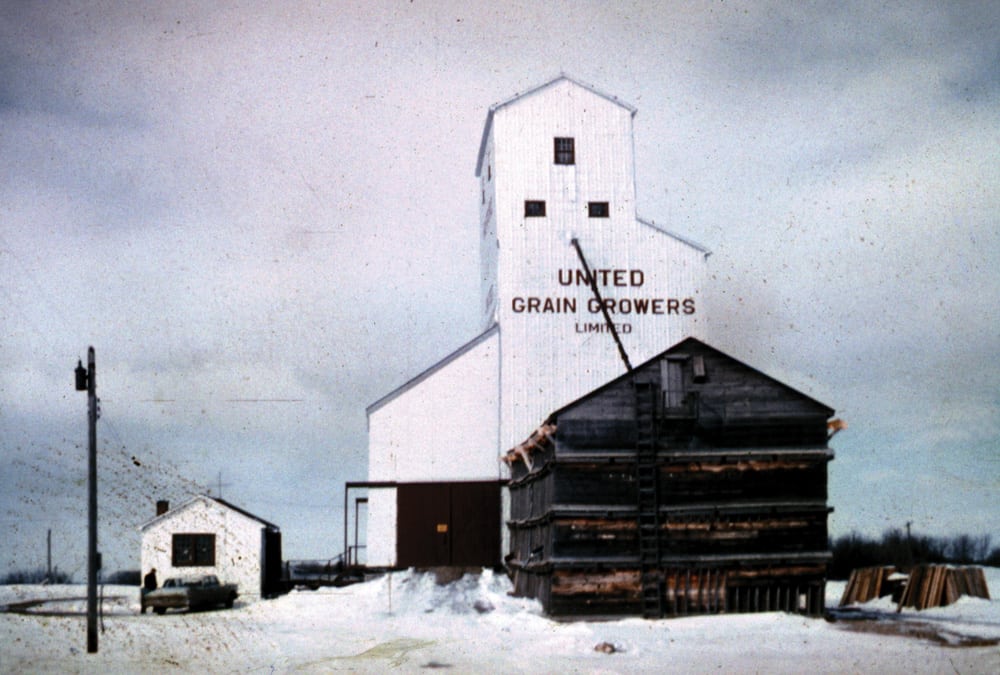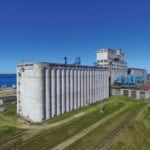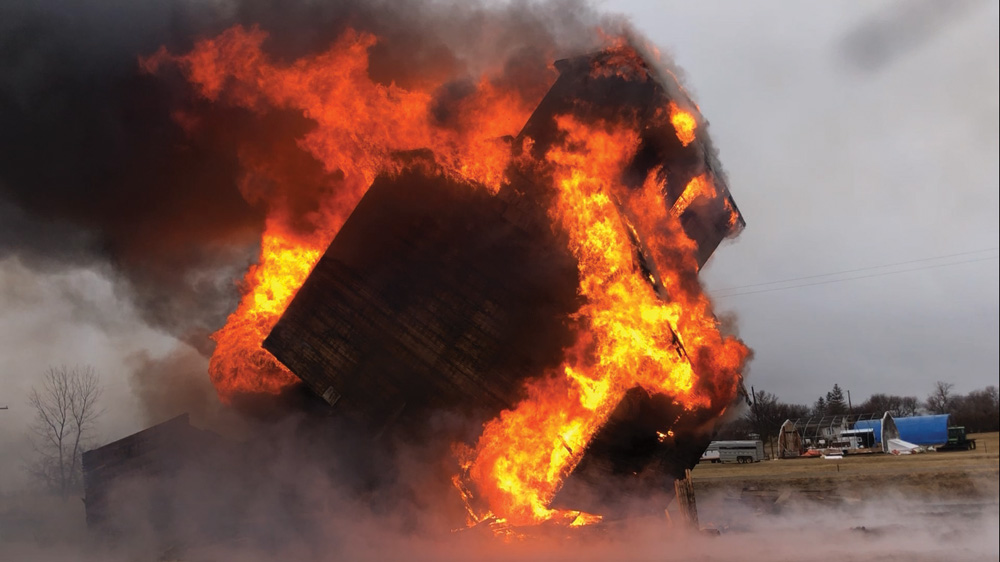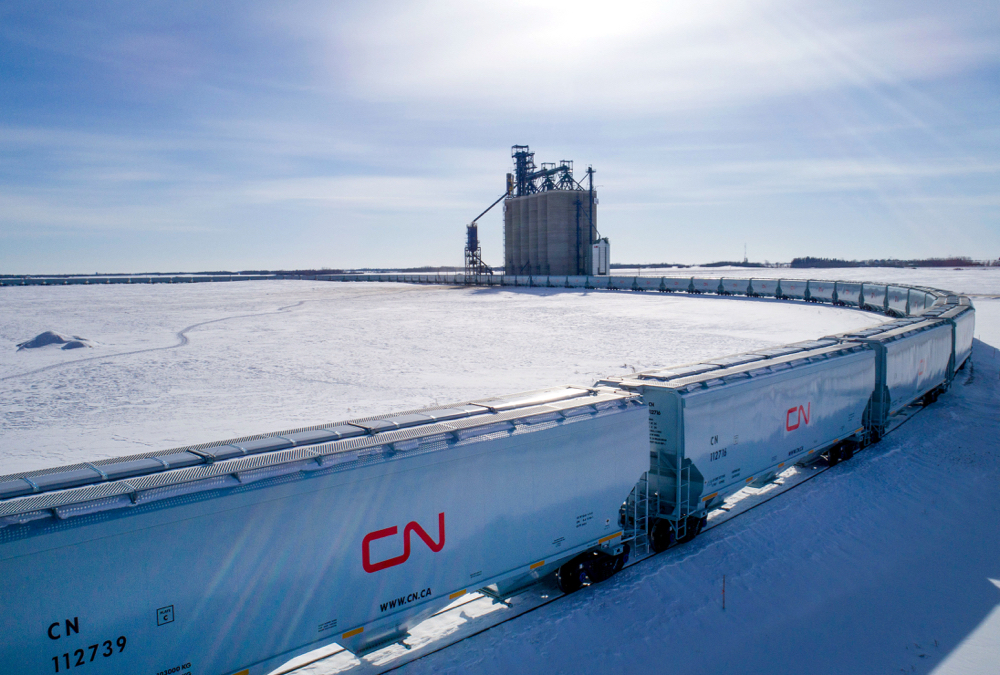
Golden Stream Federal_cmyk.jpg
Drivers on Highway No. 16 east of Gladstone have probably noticed a grain elevator on a farm along the south side of the road. The 41,000-bushel house was built by Federal Grain in 1956 at Golden Stream, a station on the CNR Gladstone Subdivision about six miles to the southwest. It replaced an earlier elevator, dating from 1935, that was destroyed by fire on July 23, 1955 along with two annexes, an engine house, and 48,000 bushels of grain. Sold to Manitoba Pool in 1972 and closed, the elevator stood vacant for a time before being sold to private ownership and moved here.
Photo: Bernie Freeman
Inglis - elevator row-LS cm.jpg
The Hudson Bay Railway reached Churchill in March 1929. One of the first priorities for construction was a terminal elevator for shipping grain to overseas markets. Designed by C. D. Howe & Company of Port Arthur (now Thunder Bay), it was erected by the Winnipeg firm of Carter Halls Aldinger between 1930 and 1931. A four-belt conveyor for loading up to four ships at once, at 20,000 bushels per hour, was completed in 1932. When done, the 2,500,000-bushel elevator was the second largest of its kind in the world. The 56 bins at its north (right) end, added between 1954 and 1955, doubled its capacity. Seen in this aerial view from June 2018, the elevator stands idle while the railway, damaged in May 2017, awaits repair.
Photo: Gordon Goldsborough
Rufford UGG_CMYK.jpg
Photo: University of Manitoba Archives & Special Collections
In the 1950s, there were over 700 grain elevators in Manitoba. Today, there are fewer than 200. You can help to preserve the legacy of these disappearing “Prairie sentinels.”
The Manitoba Historical Society (MHS) is gathering information about all elevators that ever stood in Manitoba, regardless of their present status. Collaborating with the Manitoba Co-operator it is supplying these images of a grain elevator each week in hopes readers will be able to tell the society more about it, or any other elevator they know of.
MHS Gordon Goldsborough webmaster and Journal editor has developed a website to post your replies to a series of questions about elevators. The MHS is interested in all grain elevators that have served the farm community.
Read Also

Grain seller beware
Canadian farmers selling grain need to be vigilant while doing business in an unstable financial climate.
Your contributions will help gather historical information such as present status of elevators, names of companies, owners and agents, rail lines, year elevators were built — and dates when they were torn down (if applicable).
There is room on the website to post personal recollections and stories related to grain elevators. The MHS presently also has only a partial list of all elevators that have been demolished. You can help by updating that list if you know of one not included on that list.
Your contributions are greatly appreciated and will help the MHS develop a comprehensive, searchable database to preserve the farm community’s collective knowledge of what was once a vast network of grain elevators across Manitoba.
Please contribute to This Old Grain Elevator website here.
You will receive a response, by email or phone call, confirming that your submission was received.
Goldsborough is interested in hearing all sorts of experiences about the elevators — funny, sad, or anything in between. Readers willing to share their stories can leave messages at 204-474-7469.





